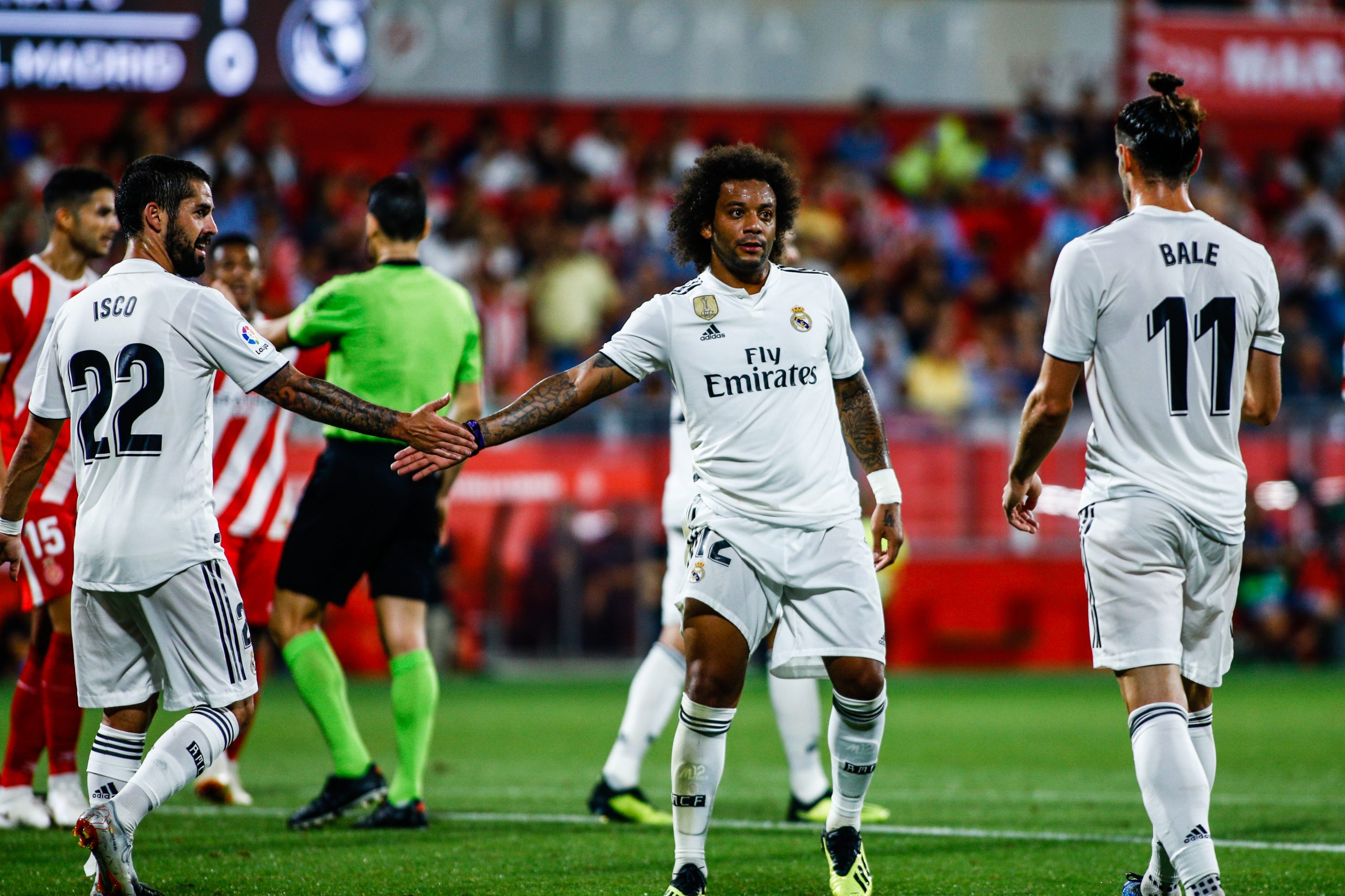Losing Cristiano Ronaldo is like a new signing.
At least, that’s the kind of thing you have to tell yourself to be convinced that Real Madrid have a strong chance of winning La Liga this season. It’s a stretch, but it’s not entirely without reason. Since Real Madrid’s style under manager Zinedine Zidane for the past three seasons was so heavily built around leveraging the strengths and mitigating the weaknesses of the Portuguese forward.
Madrid Under Zidane - Ronaldo FC
Managers like to build their football teams in their own image. Pep Guardiola’s sides are meticulous perfectionists. Jurgen Klopp wants his football to be full of emotion and energy. Jose Mourinho’s teams will do anything to win, and don’t care if they make a few enemies along the way. Zidane’s Madrid, however, did not particularly resemble him, or the wonderful technician he showed himself to be as a player. It was a team in the style of Ronaldo. The side’s primary mode of attack was, as Ronaldo likes to, to bury the opposition in a wave of shots. Some of these would be from distance, but enough would end up at close range that it produced dividends. Real’s 18.58 shots per game last season was well ahead of any other La Liga side, even if the 2.07 expected goals per game was the smallest of margins below Barcelona’s. Ronaldo was unsurprisingly the key figure in this. His 180 shots were more than double the volume of any other player, and he managed that despite serving a five game suspension to start the season. It’s clear from the shot distribution chart just how much volume Real get across the board, and how much of it comes from Ronaldo.
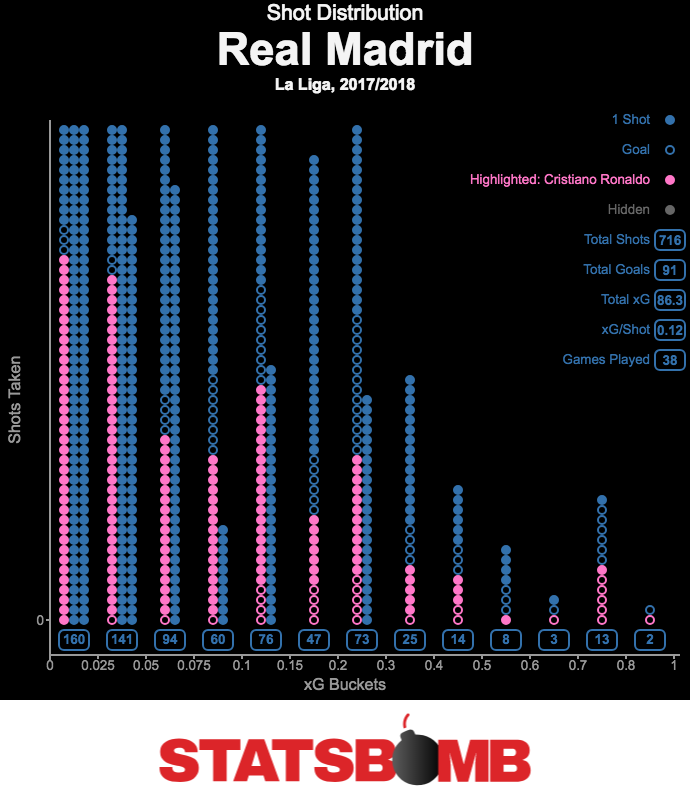
The career arc of Ronaldo is fairly well known by now. As his body has aged, he has gradually become more and more of a pure striker, stripping away the parts of his game that took place outside the box. A full 7% of Ronaldo’s touches last season were shots, a figure that puts him far ahead of any other Real Madrid player, and more than double that of his eternal rival Lionel Messi’s 3%. And yet, despite this, he still ended up with the highest xGBuildup of any Real player. While Ronaldo didn’t take a lot of touches that were not shots, the ones he did take were extremely effective.
In terms of his work off the ball, it probably won’t shock anyone to learn that Ronaldo was not a defensive workhorse last year. Of everyone at the club who played at least 1200 minutes last season, nobody pressed less than Ronaldo.
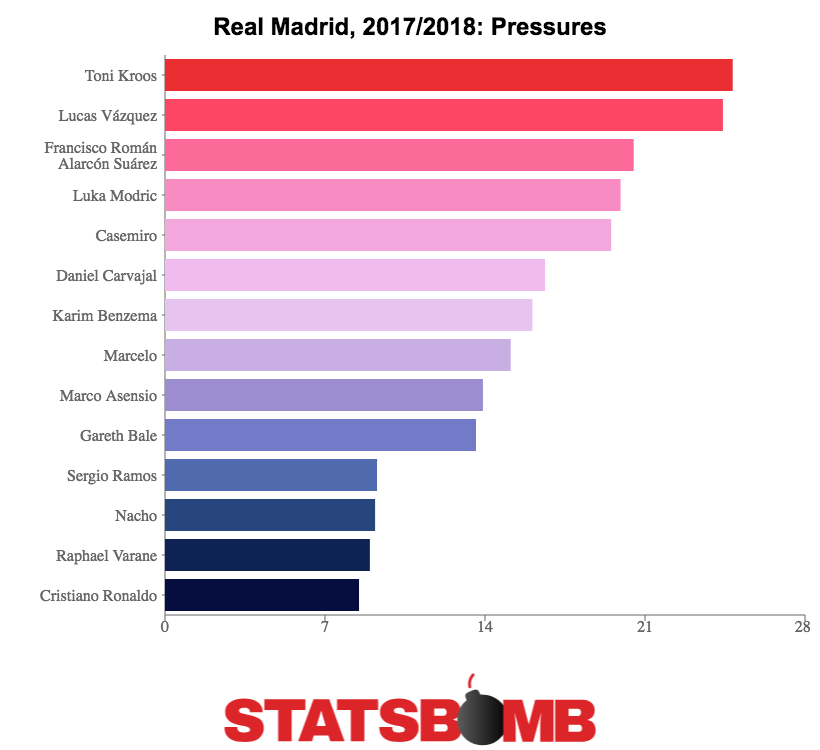
With Ronaldo setting a somewhat lethargic tone off the ball in attack, the modern tactic of pressing high and defending from the front was not workable for Zidane’s Real Madrid. As such, the midfield would potentially have more defensive work than is typically required of a top side, requiring a purely defensive minded midfielder to start in the form of Casemiro. The Brazilian was a black hole in possession, managing less than half as many deep progressions per 90 as his midfield team mates Luka Modric and Toni Kroos, but this was a tradeoff they had to make in order to allow Ronaldo to do his thing without getting exposed. Perhaps Zidane’s biggest reason for success at Madrid was understanding that a side built around such a singular superstar would have to make sacrifices elsewhere, and finding the right balance (and persuading boss man Florentino Perez to accept that balance) was key. This also might be why he was so reluctant to integrate new players into the starting eleven, as he’d built a finely balanced side that could easily be tipped too far in one direction with only minor tweaks.
What Now?
In case you’ve been under a rock, Ronaldo has moved to Juventus. Zidane, having achieved everything he wanted to do at the Bernabeu, has resigned, and was succeeded by former Spain manager Julen Lopetegui. As of writing this, the only senior outfield signing has been second choice right back Álvaro Odriozola. If Madrid are to weather the storm of losing Ronaldo, it will be about getting more out of the players already at the club.
Save for an early start at Rayo Vallecano and an uninspiring season and a half at Porto, Lopetegui’s coaching career has been spent within the Spain national team setup, working at various youth levels before getting the big job in 2016. Spain are one of the only national sides in the world to play a genuine distinctive style, so the way he’s used to working is clear: a strong focus on possession and short passing combined with an aggressive high press. This is often seen as emulating the style of Pep Guardiola, but in truth there is a much greater focus on possession and “passing for the sake of passing”: genuine tiki taka, rather than the positional play of Guardiola’s Manchester City side. When it goes right, you get Spain’s World Cup win in 2010. When it goes wrong, you get the nation’s exit to Russia this summer (in a side prepared by Lopetegui, if not managed by him at the tournament itself). Or as I call it, the game that did this to the StatsBomb pass map:
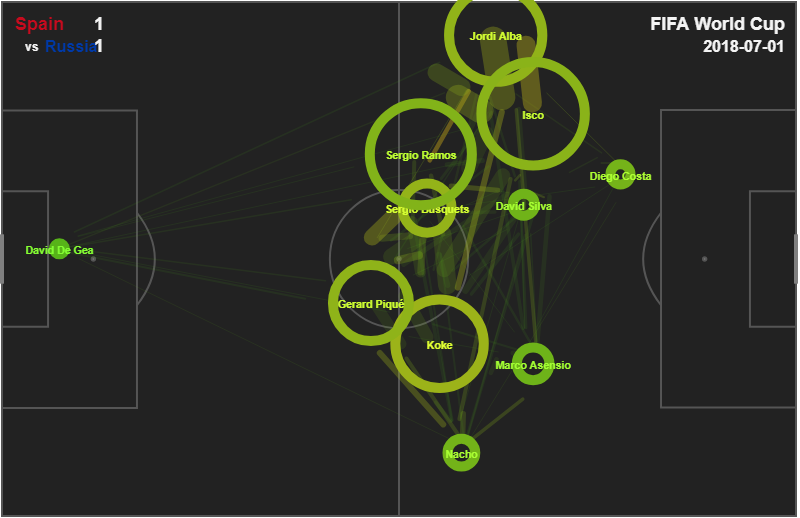
That was a lot of passing in defence and midfield for 0.97 expected goals in normal time.
The good news is that this Real Madrid squad is perhaps more suited to a more possession focused approach than ever before. Ronaldo’s two biggest drawbacks were a lack of involvement in open play and pressure from the front, and he is no longer around to set the tone for the side. In the UEFA Super Cup loss to Atletico Madrid and the first two La Liga fixtures against Getafe and Girona, Lopetegui opted for a front three of Gareth Bale, Marco Asensio and Karim Benzema. All three averaged more passes and more pressures last season than Ronaldo, even if none can do what he does in front of goal. In midfield, Casemiro started against Atletico and Girona but missed the Getafe game, implying that the better defensive work in front of him will mean he no longer necessarily features at home to weaker sides (though he occasionally missed games previously, this was more down to a rotation policy than a tactical choice). Toni Kroos moved to a deeper lying role in his place with Isco and Dani Ceballos in front, creating a midfield three that now offers serious ball progression from all three of its members, especially as former number ten Isco now seems to be a permanent midfielder. This all combines to create a side that is much more front foot in its work without possession, and more comfortable retaining the ball when it is won back. Madrid are now stylistically much closer to what one would expect to see from a top tier European side, with an extra focus on possession giving them an extra Spanish touch.
As for what we’ve seen on the pitch so far, it’s fair to say things have been mixed. Real ran Atletico close in the Super Cup, dominating in terms of possession and shot volume but allowing their neighbours a few high quality shots that they were able to convert. A solid work in progress nonetheless. Things were slightly less promising in the La Liga game against Getafe, a match they won but really without anything like the shot domination we’re used to seeing from Real.
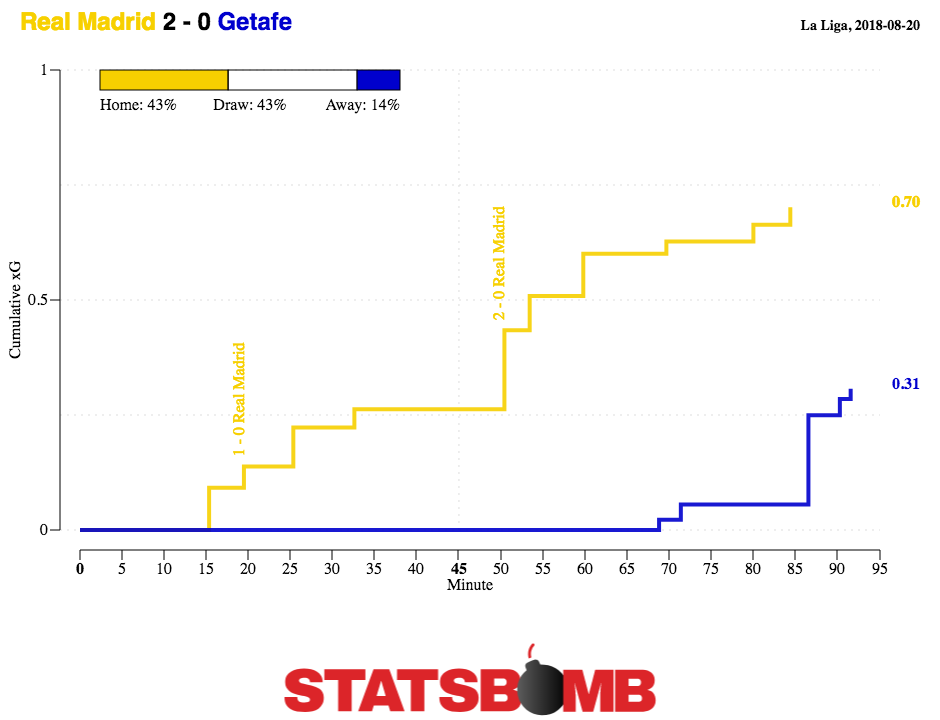
Madrid were in near total control of the ball for the vast majority of this game and generated a total of 0.7 expected goals. Granted, this was enough, but for a side that averaged 18.58 shots per game last year, starting off the new league season with just 10 in a home game is concerning. Making matters worse, the xG per shot of 0.07 was significantly down from last season’s average of 0.11, too. Comparatively speaking, Madrid created nothing against Getafe. The theoretically better ball retention and progression in midfield did absolutely zero to help the team create better chances. It was hard to view this kind of performance as anything other than last season’s Madrid minus Ronaldo.
Optimism was perhaps restored in this weekend’s 4-1 victory at Girona, as the side came back from conceding an early goal to totally dominate the game. The performance matched the scoreline, too, with Madrid having no issues generating chances this time.
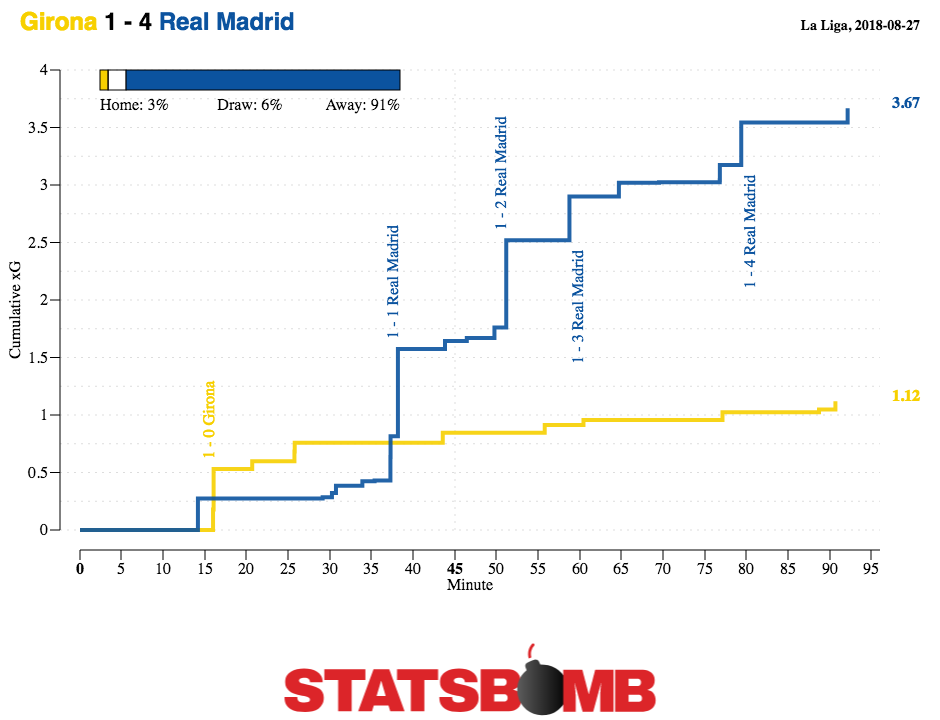
Girona were fairly aggressive in their pressing against Madrid, which probably suited the away side. This was still a much more balanced performance, with the tiki taka notch turned down a touch compared to the Getafe win. Casemiro returned to the starting lineup and was unsurprisingly not involved in possession, providing only two deep progressions. This arguably helped Real, though, giving the team a more direct feel rather than moving the ball slowly through midfield. While it is obvious that Lopetegui has his own ideas, at times in the early going it might not be the worst idea for him to stick with elements of the tried and trusted style from the Zidane era.
If any one player seemed like he would be a beneficiary of Ronaldo’s departure, it was Gareth Bale. The Welshman who always seemed like he was cannibalising his own game for Ronaldo’s finally has the stage to himself, and boy is he shining on it. Interchanging in the wide roles of the 4-3-3 with Asensio, Bale has been inarguably Madrid’s key player so far, generating both the most xG in the squad for himself and assisting the most for others.
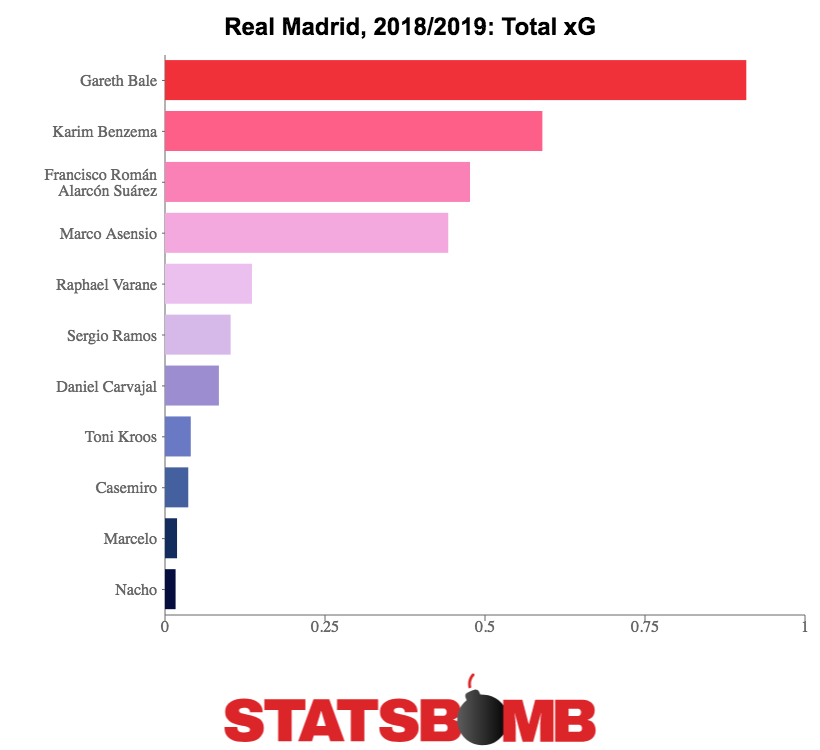
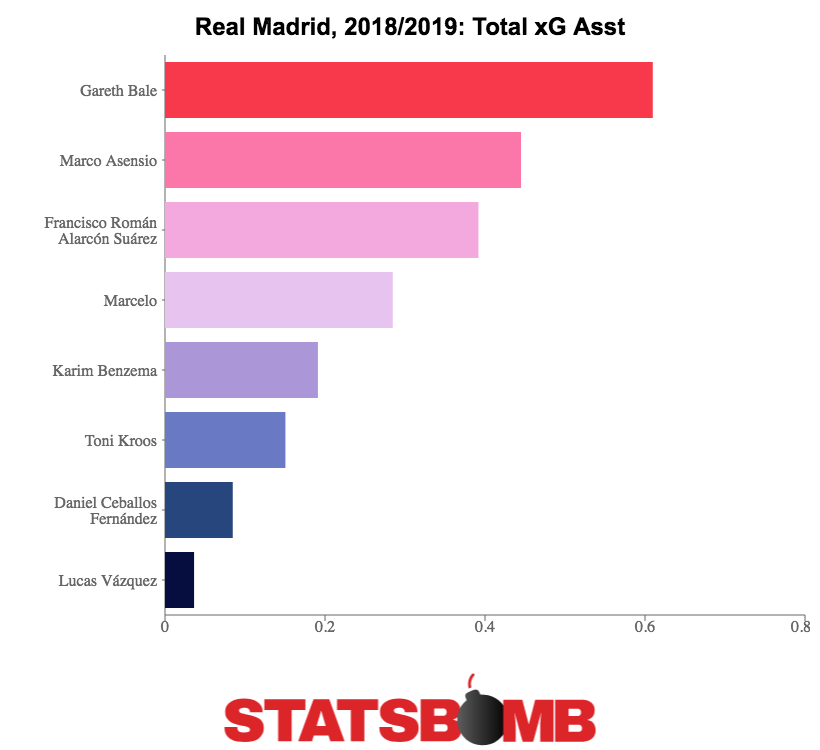
His fellow wide player Asensio hasn’t quite yet found his rhythm in the new side. Lopetegui’s system is asking for a direct wide forward who can cause problems running in behind, which is perfect for Bale, but it still isn’t clear whether Asensio’s best role is in this position or as more of a playmaker. The 22 year old remains a huge talent, but in order to become more than potential Lopetegui will have to figure out what his specific role in this side is.
Overall, it’s fair to call the post-Ronaldo Real Madrid a work in progress. Lopetegui is clearly looking to move away from Zidane’s finely balanced star studded side in favour of something more cohesive and possession based. Whether he will succeed in implementing this new style depends a lot on his ability as a coach, which is surprisingly still unclear for someone in such a high profile job. Just on pure player quality, though, it’s difficult to imagine the loss of Ronaldo not negatively affecting the team. Even if everything goes right for the new Madrid this year, second place might be something they have to accept.
